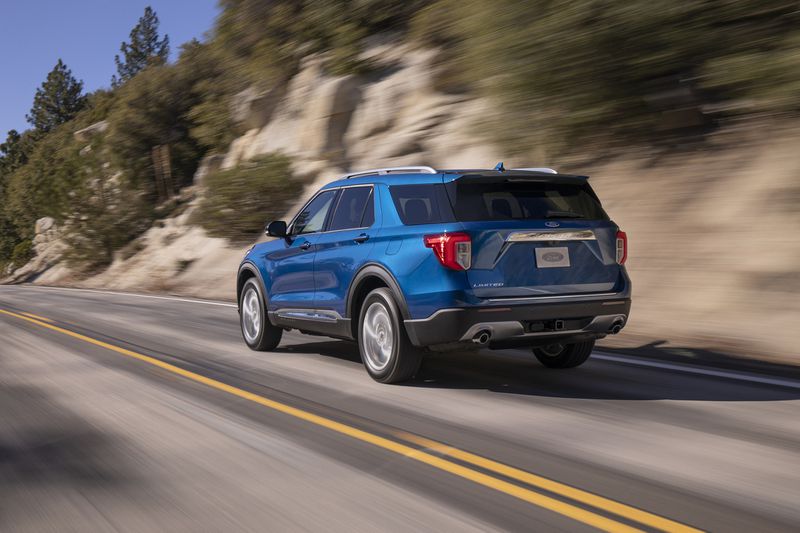Auto review: With new RWD architecture, Ford Explorer puts its best foot forward

NEW YORK — It's raining at New York's LaGuardia Airport as I write this, and it's led to massive delays for Delta Airlines. Nearly five hours after I was scheduled to depart, I am still waiting to board, something that will allegedly happen four hours from now. Never mind the flight after mine has boarded and left; I have to wait. And what does the airline have to say about ruining my life today?
"So sorry for the delay, but it's raining. So sorry."
inRead invented by Teads
ADVERTISEMENT
It's remarkable that when airlines make these routine SNAFUs, they get away with impunity. In contrast, when automakers make the slightest little slip, there's hell to pay. And so, here I sit, hour five of a nine-hour delay because it's raining.
Drivers handle rain — and worse — somewhat better than airlines do, and indeed this is what has made SUVs such as the Ford Explorer the vehicle of choice for so many motorists. With four-wheel drive and an 8-inch ride height, Explorers shrug off any weather.
So it's big news when the Ford Explorer gets a top-to-bottom redesign, as it has for 2020.
Abandoning the front-wheel-drive Volvo XC90 platform it had formerly used, the Explorer uses new rear-wheel drive architecture, although all-wheel drive is available. The switch can be seen in the new vehicle's updated styling, with front wheels with little front overhang, lending a sportier air to the Explorer's gently sloping roofline and sharper lines, although its look isn't radically different from what's come before.
Base LT, XLT and Limited models come with a 2.3-liter EcoBoost turbocharged four-cylinder engine that produces 300 horsepower, while the sporty ST and fully optioned Platinum trims get a 3.0-liter EcoBoost turbocharged V-6 engine that produces 400 horsepower in the ST and 365 horsepower in the Platinum.
For the first-timer, a Hybrid with a normally aspirated 3.3-liter V-6 and an electric motor that produces 318 horsepower and can tow 5,000 pounds. Base LT, XLT, and Limited trims come with rear-wheel or all-wheel drive, while ST and Platinum models come solely with all-wheel drive. A 10-speed automatic transmission is standard. Opting for the V-6 engine also brings with it a larger 20-gallon fuel tank; other models make do with an 18-gallon tank.
Among drivelines, the Hybrid appears to be the best compromise. The base EcoBoost suffers from turbo lag off the line, and at speed it revs higher in the rev range than the other power plants offered, with an engine note that constantly reminds you that it's the base driveline. This also results in more shifting from the transmission, although shifts are very smooth. In contrast, the ST and Platinum offer effortless acceleration. The ST is very much the raucous frat boy — athletic, strong, and always ready to party — while the Platinum is sober, self-assured adult and nearly as fast as the ST.
Still, it seems the Hybrid is the ideal driveline. While only slightly more powerful than the 2.3-liter EcoBoost, the combination of a normally aspirated V-6 and the electric motor's instant torque availability lends it a peppy feel off the line, as well as at speed. And it offers a greater driving range on a single tank of fuel. It has more power than most drivers will need, and will keep them happy when its time to fill the tank, which is smaller than in other Explorers.


